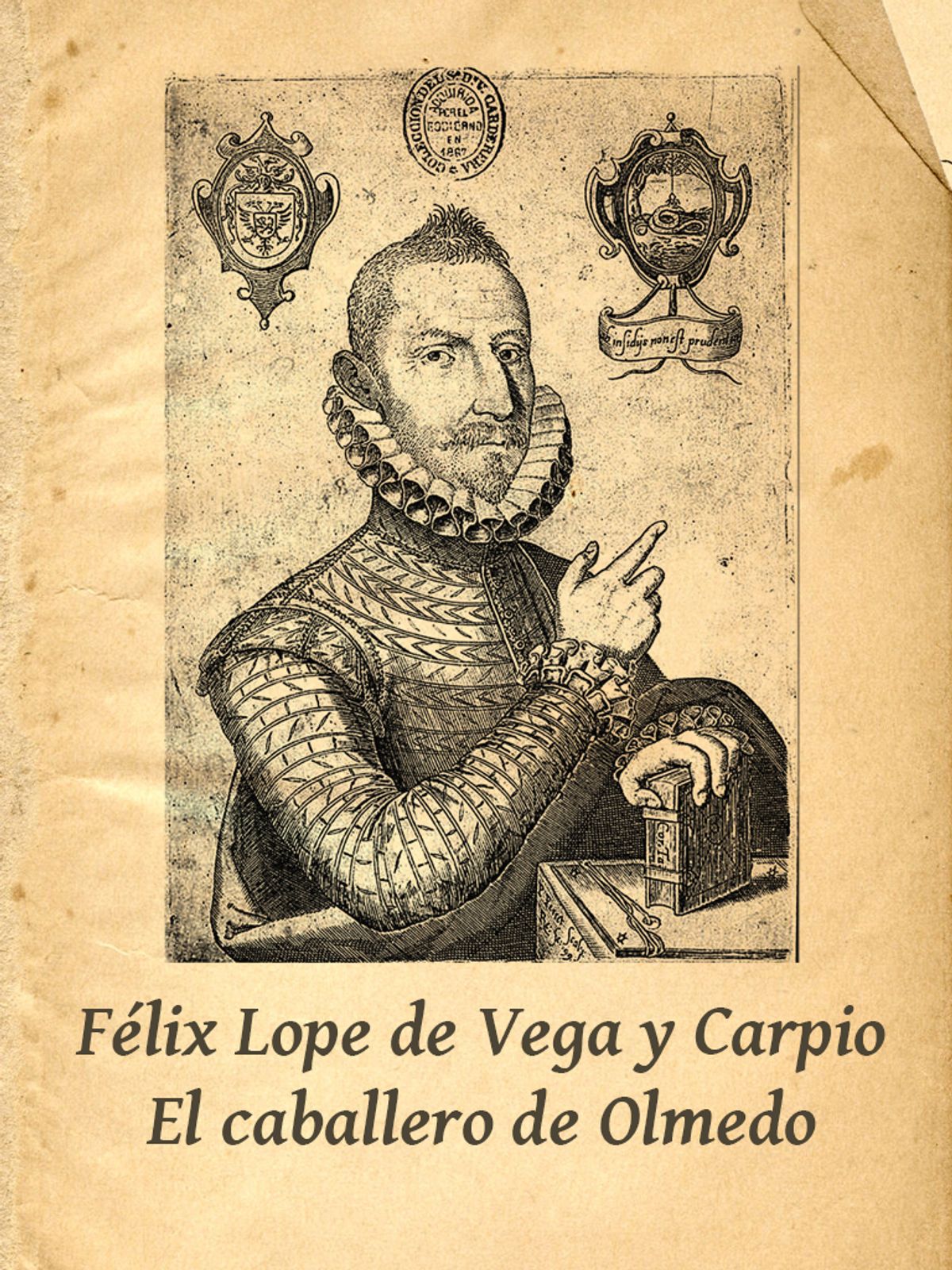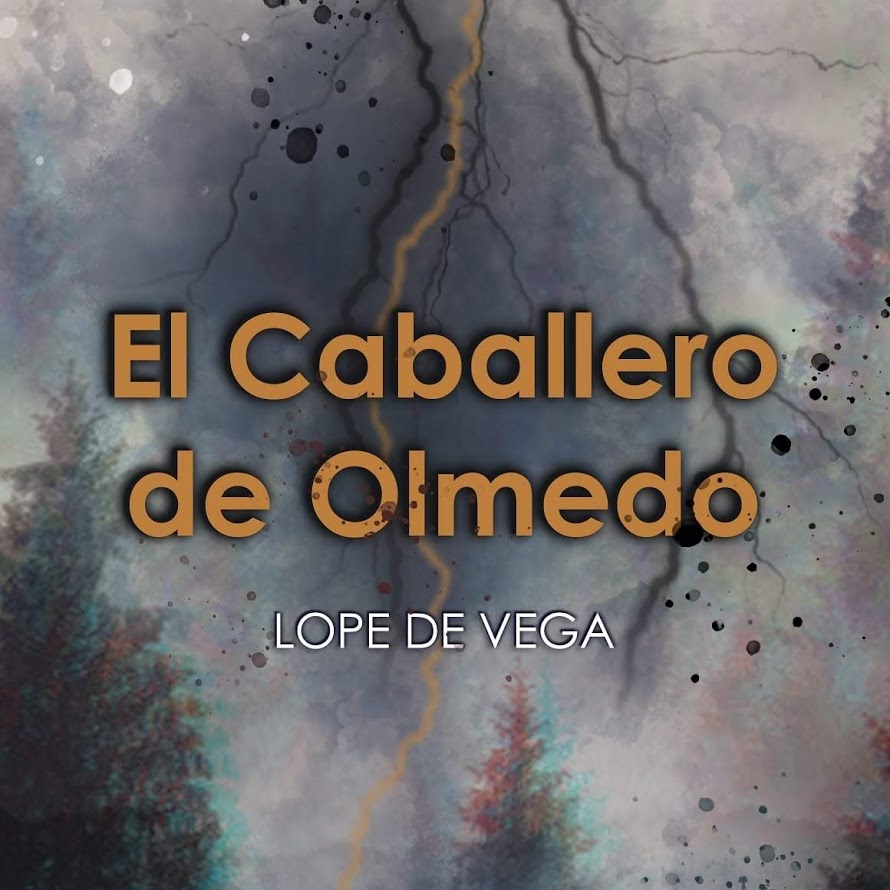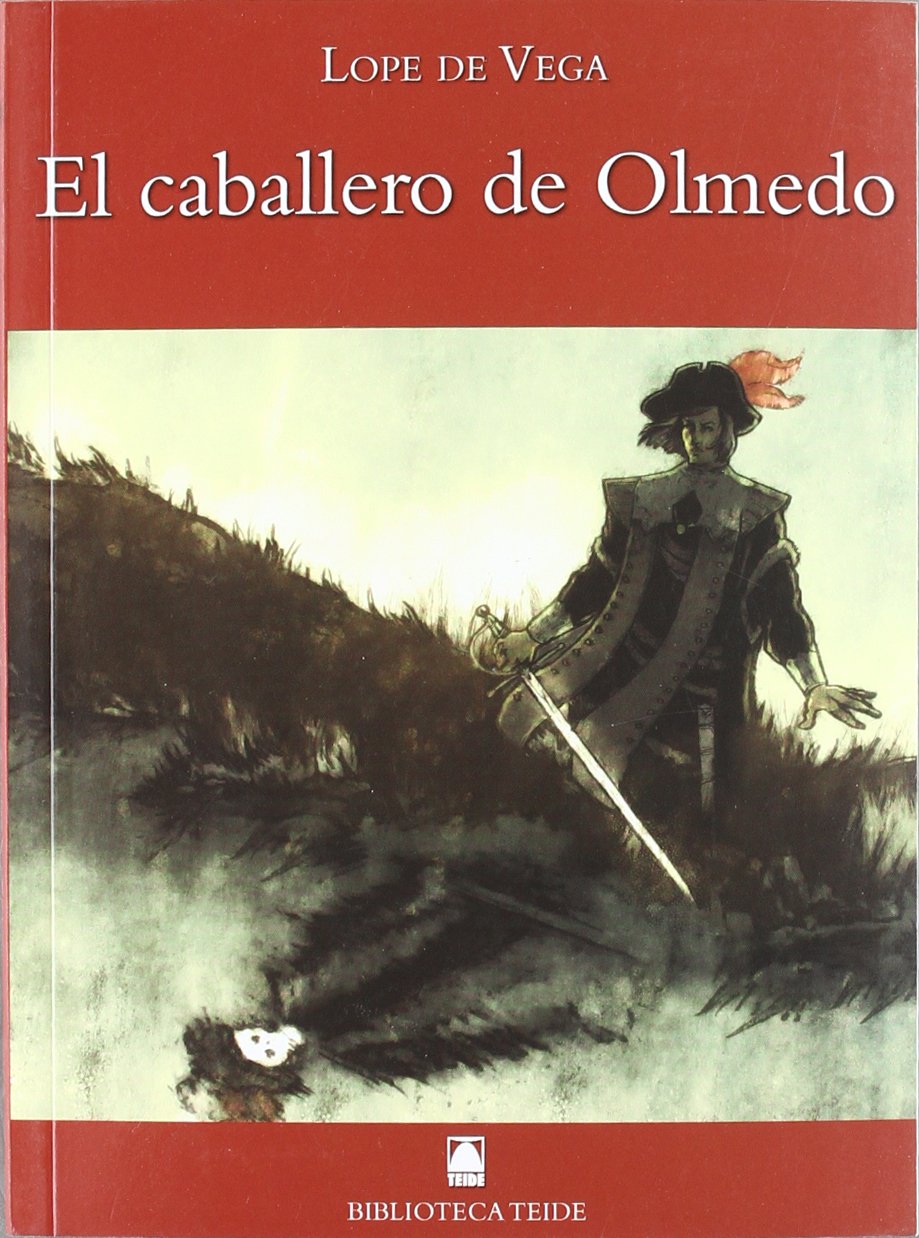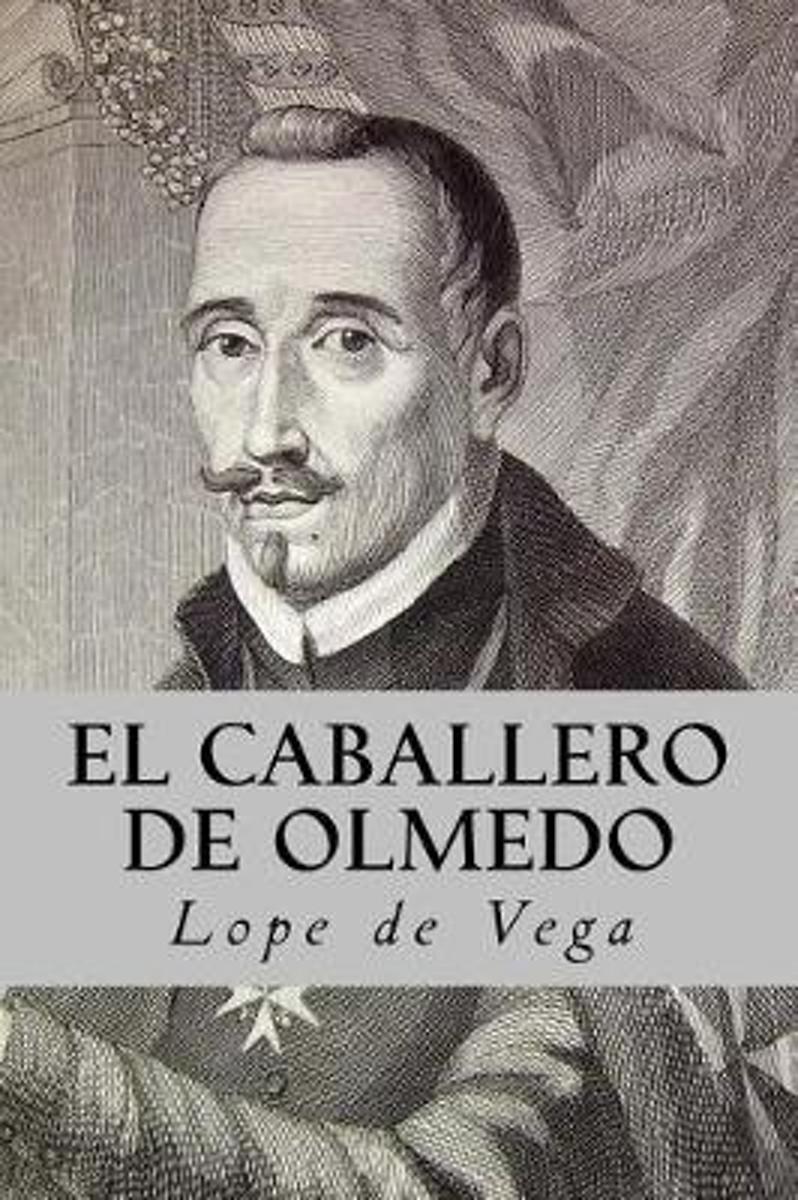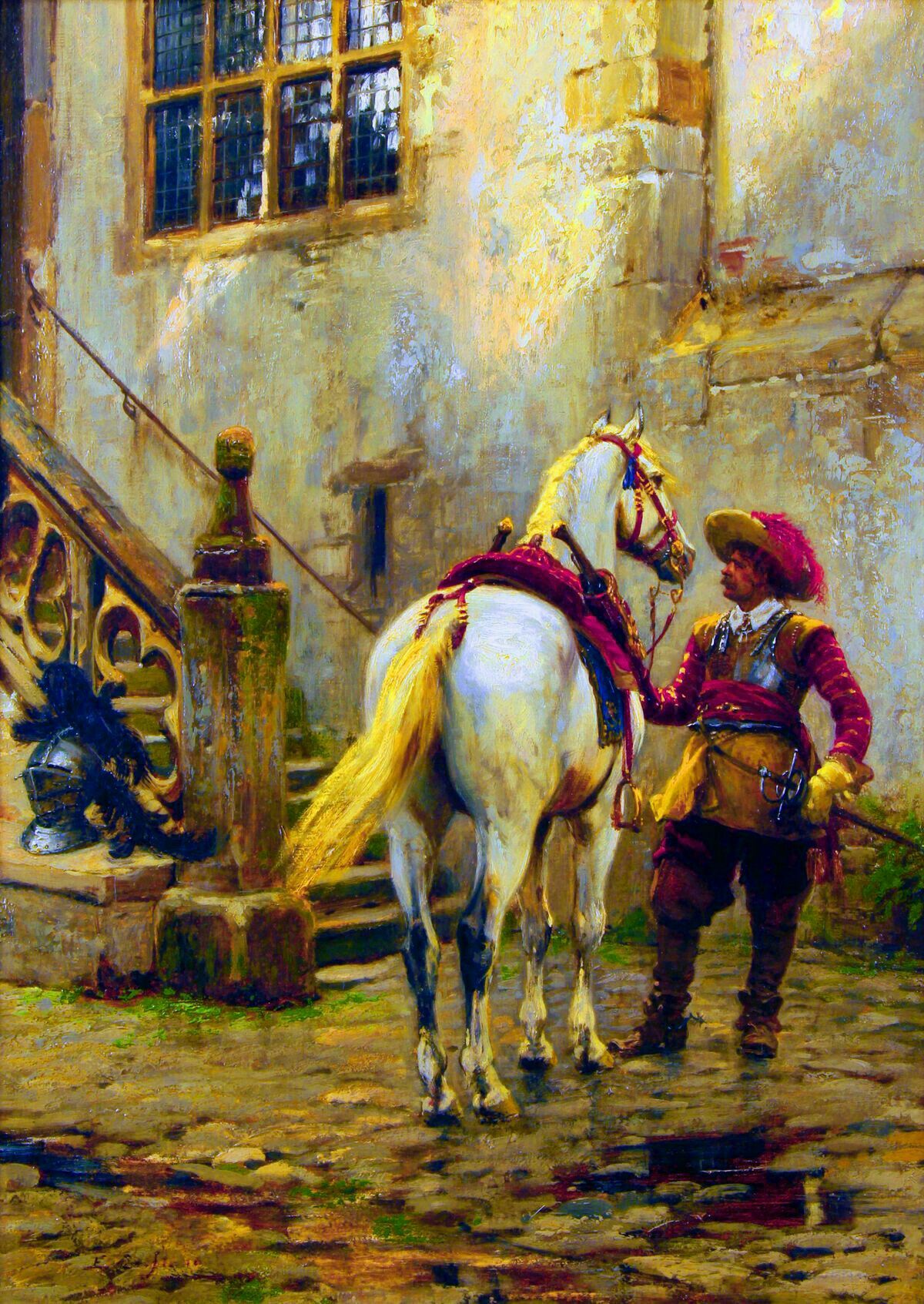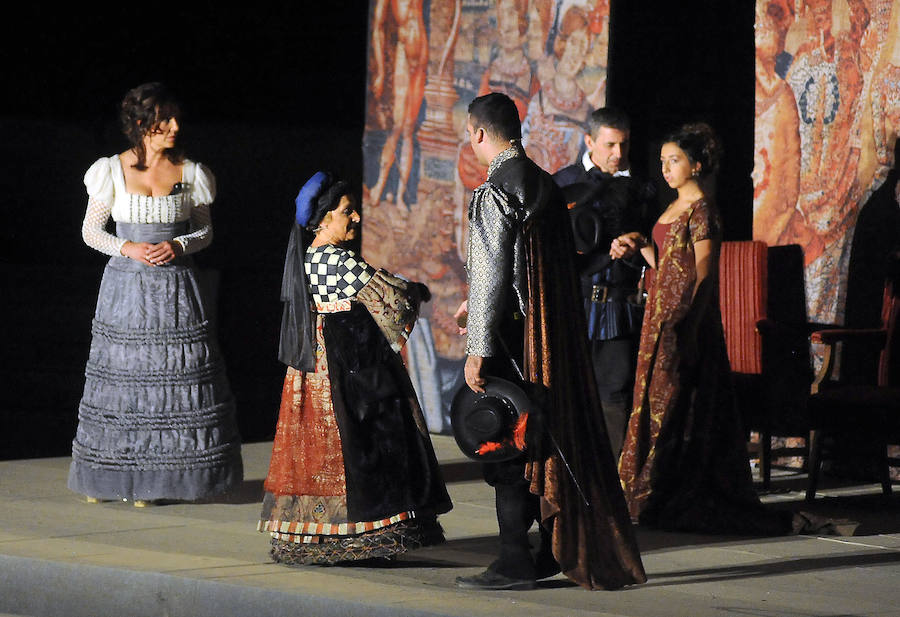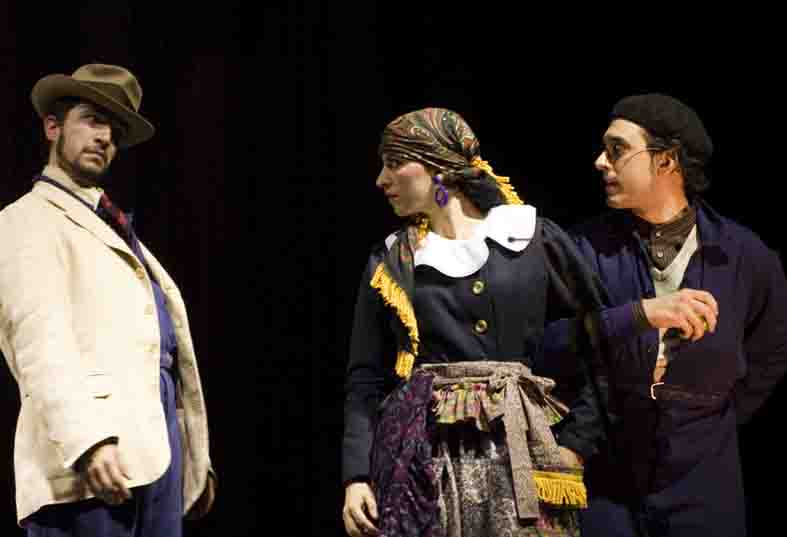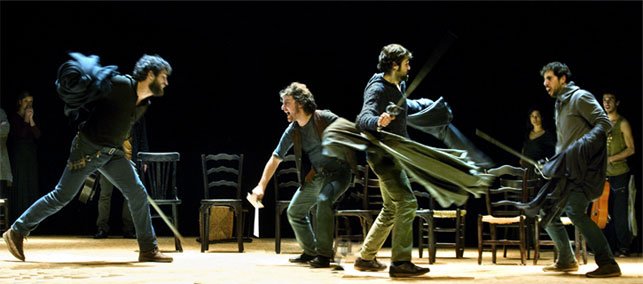The work that bears the title The Knight of Olmedo, represents to be a story that arises from the love of a young gallant in claiming the love of a beautiful young woman, but, because of a vile coward, ends in a disconsolate ending. Enjoy your reading.

The Knight of Olmedo by Lope de Vega: Plot
The literary work El Caballero de Olmedo, occurs as a melodrama, due to the fact that its own aspects belonging to this genre intervene in its classic mode, where a choir appears, the tragic consummation of its main character, or a matter of destiny as an irremediable force that attribute the characters. You can also learn about the history of Good Love Book
The character Don Alonso is a gentleman who goes from Olmedo to the town of Medina, where a well-known popular pilgrimage is celebrated. Being one of the days, he is captivated by the beauty of a young woman named Inés, falling in love with the beautiful young woman.
Busca relies on his servant named Tello, who in turn knows a matchmaker named Fabia, who earns her living selling skin and beauty creams. Don Alonso lets her know that she is madly in love with her, so he begs her to help him.
Meanwhile, Don Rodrigo, a gentleman from the town of Medina, is in love with Doña Inés, and asks Don Pedro, who is the father of young Inés, for her hand, accepting the man's request. So, Inés pretends that her true desire is to be a religious, all so as not to get married. She may enjoy reading The knight in the rusty armor
Tello and Fabia cunningly enter Inés' house, with the intention of being mediators between Doña Inés and Don Alonso. While the festivities are held in decorum of King Juan II in Medina, the young Alonso stands out as a brilliant and handsome horseman, who in fact saves Don Rodrigo's life from a goring by a brave bull, however, Don Rodrigo, with his impulsive character, plans to assassinate Don Alonso.
After the celebrations, Don Alonso returns to Olmedo, but before he says goodbye to Miss Inés. Don Rodrigo and his companions go to meet him and kill him. Tello, his servant, finds him dying on the road. In the morning of the next day, Tello anguished recounts the events of that dark night, ordered to behead Don Rodrigo and his evil companions.
El Caballero de Olmedo, is a pompous melodrama, where Lope de Vega forms a new dramatic aspect, expressing the desires, problems and ideals of a population.
Theme
The main theme that is manifested in this work is love, a love that Don Alonso feels for Inés, and the obstacles that their love relationship suffers, and the dire consequences that occur. It is a duality between love and death. At first, it looks like a story full of joyful love, but, in the end, cowardice ends with a devastating ending.
Modular
El Caballero de Olmedo, is a work that is structured in three different acts, the first two with funny and cheerful themes, while the third presents being sinister. Next we will show the content of the acts:
Act 1
The first act is defined between lines 1 and 885 of the work. Don Alonso, an honorable gentleman from Olmedo, attends the celebration of the pilgrimage in the town of Medina, accompanied by Tello, his servant.
In this place, he meets the gaze of a beautiful young woman, whose name is Doña Inés, and he is struck by love. He dares to hire a matchmaker named Fabia, to whom he delivers a love letter to be delivered to Doña Inés, who does so in exchange for a chain.
The cunning Fabia goes to Inés' house, under the pretext of bringing her some beauty products for sale, and invites her to read some master formulas where the love letter is found. That's right, when I get the young woman to read the letter, Fabia persuades her to answer it, but at that moment her fiancé, Don Rodrigo, arrives, accompanied by her friend, Don Fernando.
Upon his arrival, and knowing that Fabia is with his fiancée, he gets upset, but, immediately, the intervention of Inés and her sister, Doña Leonor, confuse them that she is the lady who is in charge of doing the laundry.
Then, Doña Inés answers the letter to Don Alonso, and the matchmaker delivers it to her. When Don Alonso has the love letter in his hands, he is afraid to read it, so he asks Tello to be the one to read it first, all for not wanting to feel rejected. Tello, of course, obeys, reads it, and hands it back to him.
In the content of the letter, it appears that Alonso must visit Inés's house to take a piece of green wood from slippers, it is a plank that he will place on the fence of the garden of his house, so that Don Alonso recognizes it and can take it away .
At sunset, Don Alonso, accompanied by Tello, go to pick up the piece of wood, to which they run into Rodrigo and Fernando, who were hanging around Inés' house and had located it. Since they did not know who it was for and who it was for, they decided to cut it up all over the center, but once they heard the voices of Alonso and Tello, they left the place.
Then, the next day in the morning, Inés observes that Rodrigo has part of the ribbon, and it comes to her mind that Fabia has set up a trick for her so that she would fall in love with her fiancé. But, when Fabia arrives, she tells him what happened, and reveals that her true lover is Don Alonso "El Caballero de Olmedo".
Rodrigo had spent two years claiming the love of Inés, and asking her to be his wife, which causes a conflict between the two gentlemen.
Act 2
This act is developed between verses 888 and 1813. After two days, Don Alonso in the company of his servant Tello, they leave for the town of Medina. But, Tello, first makes Don Alonso see the danger that this love represents for him, due to the intervention of Fabia, the matchmaker, who practices her spells. However, Don Alonso replies that love must endure all kinds of risk. They arrive at the house, then, Don Alonso and Doña Inés, begin to talk and learn about each other's lives.
Out of surprise, Don Pedro, Inés's father, appears, a reason that makes the visitors Alonso and Tello hide. But, Don Pedro is struck by it and is amazed to see that her daughter is not sleeping yet, being in the early hours of the morning, to which he approaches her and questions her, because she is awake late at night.
Immediately afterwards, Inés answers him with a farce, that she was praying and that her wishes are to be a nun, which would prevent her from marrying Don Rodrigo, and at once she tells him that she needs a habit as soon as possible, and that she also needs a teacher to teach her to sing and a teacher to learn Latin.
Her father, Don Pedro, does not wait for his daughter to see her wishes fulfilled before the call of God, and he swears that he will do everything possible so that her request is crystallized, and is dedicated to finding mentors for his daughter. . The two lovers communicate through the matchmaker Fabia, preventing her father from discovering it, and pretending to be Latin teachers who will prepare her to be a nun.
Therefore, Tello, the one in charge of carrying the love letters between Alonso and Inés, is in charge of giving him Latin classes; while Fabia will act as the teacher of values and manners.
So far, everything is going well, however, since Inés is a nun, she cannot approach or visit the fair in the town of Medina, where the king would be. Although Don Alonso had a demonstration in a dream, which would cease to exist, he attends the fair. This act culminates with the two lovers Alonso and Inés in the celebration in the town of Medina.
Act 3
Once the fair is in full action, Don Alonso intervenes as a bull rider in the famous bullfight, with an outstanding performance. So, Don Rodrigo feels annoyed and can't stand the applause and cheers that the entire audience gives Don Alonso, so he interferes in the fair.
Meanwhile, Don Alonso asks Tello to go to Doña Inés's house to tell him to be ready to speak with him, before he goes to Olmedo, because he has to inform his parents that he is still alive.
Once Rodrigo becomes active, he is thrown from his horse and falls to the ground before a bull, at this moment Alonso helps him to save himself and remains alive. This fact angers Rodrigo more than he was, for having to compensate his life to the man he feels jealous of.
But, before leaving for Olmedo, Don Alonso goes to visit Inés at her house, to tell her see you later. After this farewell, Don Alonso begins his journey to Olmedo. When he is halfway through the path that leads to Olmedo, he sees a dark shadow, and it scares him, however, he does not pay attention to it, so he continues walking.
Being very close to his home, he feels the threat of a song that heralds the death of "El Caballero de Olmedo"; he gets ready for battle, and investigates where he comes from and who sings, but whatever there is is a farmer.
A few minutes before saying goodbye, he sees that some men are approaching, whom he instantly recognizes, being Rodrigo, Fernando and his domestic Mendo. Don Alonso, realizing that it is about them, does not worry, thinking that they will not bother him at all. However, his thinking was not like that, the servant Mendo murders him, and the three flee to the town of Medina.
After a few hours, Tello approaches Don Alonso, who is lying on the ground, and supports him until he reaches his parents. While all this event is happening, Doña Inés dares to tell her father the whole reality about Don Alonso; and he agrees to get married.
Tello returns to the house and runs into Don Rodrigo and Don Fernando, who after the vile assassin of Don Alonso, were on their way to ask for the hands of Inés and Leonor. Immediately, without waiting, he tells Doña Inés and the king about the event, who is still in the house, and manages to have both of them executed.
The myth of the Knight of Olmedo and his literary creations
The myth of the gentleman, remained for a long time, when Lope de Vega, will make the decision to capture his melodrama. The French historian and Hispanist named Joseph Pérez, found in the Simancas library, an event that affirms that the birth of the legend could have been real.
On November 6, 1521, Miguel Ruiz, a legendary neighbor of Olmedo, disloyally murdered his neighbor named Juan de Vivero, when he was returning from a bullfight in the town of Campo de Medina, in the same place, that from that moment on is known by the name of La Cuesta del Caballero.
Perhaps the legend originated from this, however, apparently the theme of exclusive revenge, has little importance for it to subsist in the minds of people. However, Lope de Vega had no information about the event of the year 1521.
The legend was known to him, only through reading. It is probable, as Francisco Rico states, that during the XNUMXth century, a procession about the death of the knight will be disclosed, being the only thing known in current times, two truly confusing verses and adaptable to many other aspects, we show them:
Knights of Medina
I have been badly threatened
Francisco Rico himself presumes that during the 1601th century, given by the movement of the Court to Valladolid, years 1606 to XNUMX, the myth returned again. On this argument, the Gentleman's Dance was shaped, which its manuscript and printed successors have been achieved today.
It should be noted that the version that has managed to be more publicized was the one published in a volume called El Fénix de España Lope de Vega Carpio. Being the seventh part of his comedies from the year 1617. Likewise, it is interesting to let the reader know that the writer did not participate in that edition, and perhaps the dance is not his, rather an element arbitrarily added by the editor.
It is very certain, however, that it will be found in the lands of Old Castile, and in contemporary times, it has clear similarities with certain love affairs of Lope himself.
During the dance, they contained a short sing, it is likely that it had been prior to the dance:
tonight they killed him
to the Knight,
to the Medina gala,
Olmedo flower
There is no doubt that it resonated very well with Lope, because he transcribed it in many forms such as: El santo negro Rosambuco, in the Auto del pan y del palo and in the Auto de loscantares.
Sources, creation and continuity of El Caballero de Olmedo
Lope de La Vega found the four verses of the song as a source of inspiration. The famous dance provided him with many tragic reasons that are reflected in Act III, however, the poet did not continue with the printed work in the Seventh part, rather, with a manuscript version, which many people kept in memory, as Francisco Rico demonstrated.
Surprisingly, although Lope was enlightened at the dance, the playwright did not include in his melodrama the lyrics in which the gentleman is named:
Oh Don Alonso!
my noble lord,
it has cost you dearly
having me love!
It is good to make known that the content of the work was not published until after the death of the author, being the year 1641, and removed from the control of his heirs and custodians in Zaragoza.
At the end of the XNUMXth century, the publication and investigation of Menéndez Pelayo began, assigning it a value that reaches our times.
Characters
In the present work El Caballero de Olmedo, interesting main and secondary characters intervene for its development, which we present to you below:
Main courses
The main characters that make the development of the work possible, and with the vital participation of:
Don Alonso
He is the main character, he is a nobleman, handsome and gallant, the most important in the work. He has a distinguished appearance, splendid and romantic character. For what he earns the admiration and respect of all the people of the town.
Since he saw Doña Inés, he fell in love with her, whom he wanted to make his wife. But, because of the fatal event that awaited the knight, his character ends in an unfortunate way.
Mrs. Ines
She is a young woman of spectacular beauty and very clever, making believe that she would dedicate her existence to God, becoming a nun, to prevent her marriage with an unwanted man. She is a respectful young woman and at the same time sincere with her father. She also has good manners and love returns to Don Alonso.
Don Rodrigo
This character is the opposite of the protagonist of the work, he always walks in the company of Fernando. He is a man of haughty character, treacherous and cowardly. Similarly, he tries to conquer the love of Inés, unlike Don Alonso, he has been asking her to marry him for two years without success.
He is also an honorable gentleman, so he deserves to marry Inés. Although his life has been saved by don Alonso, he becomes a vile man by assassinating him.
Because of this character, a dangerous love triangle is formed between Don Alonso, Doña Inés and him. Willing to do anything to achieve such a coveted marriage.
Dona Leonor
It is the sister of Doña Inés, she is a good girl, who intervenes with her advice to help her sister. She is in love with Don Fernando.
Secondary characters
With the participation of these characters, it is also possible to complete the work El Caballero de Olmedo, namely:
Mr.Fernando
It is the gentleman who always accompanies Don Rodrigo, it is his advice. He is engaged to Leonor. He is also the accomplice in the death of Don Alonso.
Don Pedro
This character is the understanding father of Doña Inés and Doña Leonor. He is a man of distinguished origin, he carefully takes care of his daughters, he is the one who represents the authority in them. So, any young man who desires the love of the girls must have his approval, he is the one who decides and gives his daughters' hands so they can marry. But, in the end, he accepts that his daughter, Inés, marry Don Alonso.
Tello
This character refers to the domestic and counselor of Don Alonso. He is fearful and boastful, but, it shows his honesty and fidelity to his master. Due to his graceful condition and his virtue, he enjoys acceptance and links perfectly with the public.
Fabia
It is quite a character, who is the pimp of Don Alonso and Doña Inés, is in charge of carrying and bringing letters and messages of love between the two lovers. She is said, that she uses wiles of magic and sorcery. Don Alonso looks for her when he feels madly in love with Inés. She is a woman who provokes mystery, she invokes diabolical energies. She has the audacity to predict that a fatal energy will engulf the lovers in a fatal destiny and the end of history.
Featured Representations
The work of the Caballero de Olmedo has enjoyed many important performances, among which we can highlight:
Year 1953
Spanish Theater – Madrid
Under the direction of Modesto Higueras. With the interpretation of the actors: Mari Carmen Díaz de Mendoza, José María Seoane, Julia Delgado Caro, Miguel Ángel, Rosita Yarza.
Chamber Theater – Barcelona
With the interpretation of the actors: Eduardo Criado, Laly Soldevila, Ramón Durán, Juana Espín, Estanis González, Alicia Agut.
El Retiro Park – Madrid
Under the direction of Miguel Narros
With performances by Julieta Serrano, Carmen López Lagar, Miguel Palenzuela, Ana María Vidal, Vicente Soler, Bony de la Fuente, José María Cuadrado.
Year 1977
Villa Cultural Center – Madrid
With the performance of the following characters: Fernando Cebrián, María Jesús Sirvent, Guillermo Marín, Félix Navarro, Vicente Gisbert, Miguel Rellán, Miguel Palenzuela, José Caride, Juan Meseguer, Isa Escartin.
Year 1982
Las Vistillas – Madrid
With the interpretation of José Luis Pellicena, Margarita Calahorra
Year 1990
Comedy Theater – Madrid
With the participation of the actors: Carmelo Gómez, Enrique Menéndez, Encarna Paso, Laura Conejero, Jaime Blanch, Ana Goya, Marcial Álvarez, Fernando Conde.
Year 2013
Fernan Gomez Theater – Madrid
Acting as characters in the play: Javier Veiga, Marta Hazas, José Manuel Seda, Enrique Arce, Encarna Gómez, Andrea Soto
Year 2014
Pavón Theater, National Classical Theater Company – Madrid. Under the direction of Lluís Pasqual
The interpretation of the actors: Javier Beltrán, Mima Riera, Francisco Ortiz, Rosa Maria Sardà, Jordi Collet, Carlos Cuevas, Pol López, Paula Blanco, Laura Aubert, David Verdaguer, Samuel Viyuela González.
